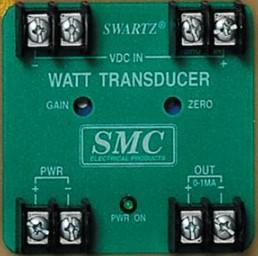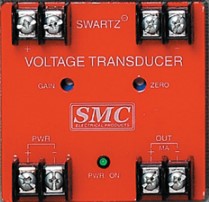
Energy efficiency has become a major focus for industries worldwide, with the railway sector being no exception. With the growing need to reduce carbon emissions, optimize energy consumption, and manage operational costs, railways are continuously seeking advanced technologies to enhance energy management systems. One such technological innovation playing a pivotal role in this transformation is the WATT Transducer.
Developed and utilized by companies like Swartz Engineering, WATT transducers have been instrumental in improving energy management, ensuring that railway systems operate efficiently, cost-effectively, and with minimal environmental impact. This article will explore how WATT transducers are used in railway systems, their advantages, and how they contribute to smarter energy management in modern railways.
What Are WATT Transducers?
WATT transducers are electrical devices designed to measure power (in watts) in an electrical circuit. They work by converting the physical quantities of voltage and current into proportional electrical signals that can be easily interpreted by monitoring and control systems. These signals provide real-time data on power consumption and energy usage, making it easier for operators to monitor performance, optimize energy usage, and make informed decisions.
For railway systems, where large amounts of power are used to operate trains and supporting infrastructure, WATT transducers offer a precise way to monitor and control energy consumption. By delivering accurate measurements, they help ensure that power is used efficiently, reducing waste and minimizing operational costs.
The Role of WATT Transducers in Railway Energy Management
Energy management in railways involves the systematic monitoring, controlling, and optimizing of energy usage across all systems. This includes everything from powering locomotives to maintaining signals, lighting, and other auxiliary systems. WATT transducers play a vital role in achieving this by providing real-time data that can be used to improve energy efficiency. Here’s how:
1. Precise Power Monitoring
One of the key functions of WATT transducers in railway systems is to offer accurate power monitoring. By continuously tracking the energy consumed by trains and other electrical systems, transducers provide operators with detailed information about power usage in real-time. This data allows railway companies to identify inefficiencies, track energy spikes, and pinpoint areas where consumption can be reduced.
For instance, if a particular train is using more energy than expected, operators can investigate and make adjustments, such as optimizing the train's speed or adjusting its electrical systems. With precise data, WATT transducers enable more efficient operations, which in turn helps reduce overall energy costs.
2. Integration with Smart Grid Technology
The integration of smart grid technology with railway energy systems has become more common in recent years. Smart grids are designed to optimize the distribution and use of energy by integrating renewable energy sources, automating processes, and enhancing communication between energy producers and consumers.
WATT transducers are a crucial component of this system. By providing real-time power measurements, transducers help smart grids optimize the flow of electricity, ensuring that trains receive the power they need without overloading the system. Additionally, transducers make it easier to incorporate renewable energy sources, such as solar and wind power, into railway operations, reducing reliance on traditional fossil fuels and lowering carbon emissions.
3. Energy Optimization for Traction Systems
In railway systems, traction power is one of the largest consumers of electricity. Traction systems convert electrical energy into mechanical energy, allowing trains to move. WATT transducers play a crucial role in monitoring and optimizing the energy used by traction systems.
By continuously measuring the power consumed by traction systems, transducers provide real-time feedback to operators. This data can be used to adjust the train's operation to ensure energy is being used efficiently. For example, operators can adjust the acceleration and deceleration of trains to reduce energy consumption during peak usage times.
Optimizing traction power is not only essential for lowering energy costs but also for reducing wear and tear on railway equipment, which can extend the lifespan of trains and reduce maintenance costs.

GET IN TOUCH
In a hurry? Call us at 276-285-3841
4. Improved Efficiency in Auxiliary Systems
Beyond traction systems, railways use energy for a variety of auxiliary systems, such as lighting, heating, and signaling. While these systems may not consume as much power as the trains themselves, they still contribute to overall energy usage.
WATT transducers can be installed in auxiliary systems to monitor power consumption and identify areas where energy savings can be made. For example, if the lighting system in a station is using more energy than necessary, operators can adjust the system to ensure it is operating at maximum efficiency. Similarly, heating and ventilation systems can be optimized to reduce energy consumption while maintaining passenger comfort.
5. Energy Recovery Systems
Energy recovery, also known as regenerative braking, is a technology used in railways to capture energy that would otherwise be lost during braking and convert it back into usable electricity. This recovered energy can be stored and used later, reducing the need for additional energy from external sources.
WATT transducers play a crucial role in energy recovery systems by measuring the amount of energy recovered and ensuring it is efficiently stored and used. By providing accurate data on the amount of energy being recovered, transducers help railway companies maximize the benefits of regenerative braking and further improve energy efficiency.
6. Reducing Carbon Footprint
As railways continue to expand and modernize, reducing their carbon footprint has become a top priority. Energy-efficient technologies, such as WATT transducers, contribute to this goal by helping railways use less energy and reducing reliance on non-renewable energy sources.
By providing accurate data on energy consumption, WATT transducers allow railway companies to make informed decisions about how to reduce their energy usage and incorporate renewable energy sources into their operations. This not only helps reduce the environmental impact of railway systems but also aligns with global efforts to combat climate change.
Advantages of Using WATT Transducers in Railway Systems
The use of WATT transducers in railway systems offers several advantages that contribute to better energy management and improved operational efficiency. Some of these key benefits include:
- Accurate Measurements: WATT transducers provide highly accurate data on power consumption, allowing operators to monitor energy usage in real-time and make adjustments as needed.
- Cost Savings: By optimizing energy usage, railways can reduce their overall energy costs. Transducers help identify areas of inefficiency, enabling cost-effective solutions.
- Improved System Reliability: Continuous monitoring of power usage helps railway operators detect potential issues before they become major problems, improving system reliability and reducing the risk of costly breakdowns.
- Sustainability: With the ability to integrate renewable energy sources and reduce carbon emissions, WATT transducers contribute to the sustainability of railway operations.
- Enhanced Safety: By monitoring energy consumption across various systems, WATT transducers help ensure that all systems are operating within safe parameters, reducing the risk of accidents or malfunctions caused by energy-related issues.
Future Outlook: Advancing Railway Energy Management
As the railway industry continues to evolve, energy management will remain a top priority for operators looking to improve efficiency and sustainability. The use of technologies like WATT transducers will likely continue to expand, particularly as smart grid technology and renewable energy sources become more integrated into railway systems.
In the future, we may see even more advanced transducers capable of providing even greater levels of detail and accuracy in energy measurements. These innovations will further drive energy efficiency in the railway sector, helping to reduce operational costs and contribute to a more sustainable future.

GET IN TOUCH
In a hurry? Call us at 276-285-3841
Conclusion
WATT transducers, such as those developed by Swartz Engineering, are an essential component in the modernization of railway energy management. Their ability to provide precise measurements of power consumption allows railway operators to optimize energy usage, reduce costs, and improve the sustainability of their operations. As energy efficiency becomes increasingly important, the role of WATT transducers in the railway sector will only continue to grow, helping to create a more efficient and environmentally friendly future for rail transportation.
Products We Offer
Swartz Engineering strives to provide top-quality products to achieve our customer's needs. Our products include:
- Type 76 DC Relay
- Type 82 DC Relay
- Swartz Engineering’s Type 64 Ground Relay
- Type 32 Reverse Current Relay
- Type 150 DC
- CSM Shield Monitor
- Metal Oxide Surge Arrestors
- Transducers
- MVIS SL Slim-line Contactor
- Fully-tested Power Control Rooms
- Swartz Engineering’s Portable Substations
For nearly half a century, we have proudly led the industry in ensuring safety and efficiency. Swartz Engineering is a trusted family-owned company dedicated to providing top-notch power distribution solutions for the electrical industry. Contact us today!
